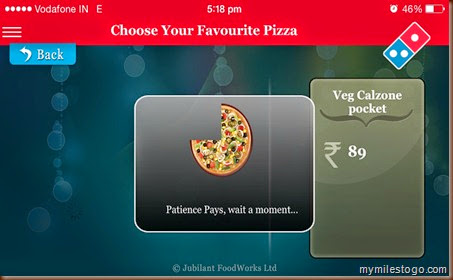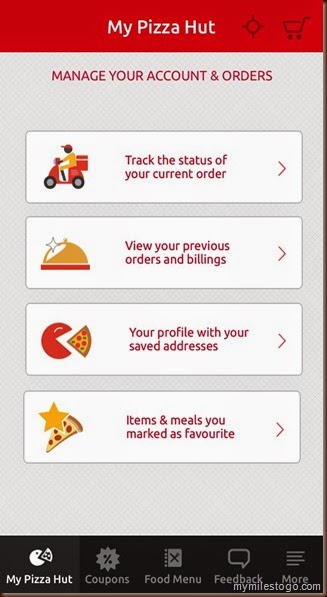01 July, 2019
Why Coke wants Coffee...
09 June, 2019
Self-Checkout or Assisted
Omni-Channel offers a great opportunity for SME Retailers as much as the established ones. Time to make the most of it now.
10 April, 2019
Retailers and Jet Airways – Cross Learnings
21 March, 2019
Travel Retail at Regional Airports
03 October, 2018
My i Vs. Mi Experiences
30 August, 2018
Would Pricing alone entice Customers?
21 June, 2018
Is Consumer Loyalty Dead?
- There is limited seasonality these days, in a sense Customers shop all through the year compared to “Occasion-based Shopping” such as for festivals, wedding season, special occasions etc. So, while the lean periods through the year have more or less flattened, the demand spread has also evened out
- Ever since the 2008 Economic Crash worldwide, Customers have become wary of spending high on products which would eventually be available at a lower price in a few weeks (sic). While India saw a boom in Mall culture between 2009-2014, the sheer number of Brands and their availability all through the year have been a cake for the Customers with easier accessibility 365 days
- While I am not a big fan of “E-Commerce killed Offline” theory, it is a fact that there has been a reasonable impact for fashion brands, especially. This is mainly because the unsold Inventory were pushed to their digital vertical by Brands to liquidate the stocks and over time, the likes of Jabong and Myntra have become more of “Factory Outlets” where discounted Merchandise are available, always. It is no wonder that the share of products which are on Full Price on such Ecommerce Marketplaces is relatively low compared to those on Discounts. Actually, this is applicable for all categories
- Department Stores offer a larger “Discount Pie” compared to the Mono Brands, given that most of them operate on a “Buy and Sell” model with no stock returns to the Brands. Therefore, in an effort to reduce the impact of their exposure to unsold Inventory, Department Stores offer aggressive discounts & promotions to ensure they clear old stocks as much as possible.
25 June, 2017
Smiling Baby 2.0
23 October, 2014
EMIs to the rescue of Retailers
19 October, 2014
The iPhone Saga continues...
24 July, 2014
Online Dining
I have enjoyed my pizzas better at the restaurant that at home, all along. It is more to do with the fun of dining – you plan a trip to the pizzeria, a walk or a short drive usually, or even at a Mall after finishing retail therapy. I fondly remember the bottomless Coke and unlimited Pizzas at Pizza Corner in Chennai in the late 90s during my most cherished college days with my gang of friends. Have ever since been a fan of pizzas and the love has only been growing. Frankly, I like pizzas from different places, be it Dominos or Pizza Hut, California Pizza Kitchen or standalone indie restaurants. One of my most favourite of course has been from “Italia”, the fine dine restaurant at The Park, Bangalore. For me, Pizza is an all time snack. I am usually game for a pizza at any time of the day (or evening) although I avoid a heavy dinner of pizzas. In fact, the love of pizza is more because of the yummy accompaniments, the cheese garlic bread and an array of toppings, especially the gherkins and olives. Am not a big fan of coloured flavoured colas and would rather prefer a strong coffee if not a lemon ice tea to drown the heavy food.
What I like best is food to be served hot and fresh from the kitchen. Haven’t been a big fan of home delivery or takeaways since I feel that the freshness is somehow lost, especially the international fare such as pastas, pizzas etc. although Indian food is still doable – we have an option to reheat the curries and biryanis at home once again which can’t be done with pizzas and pastas. Have avoided ordering pizzas at home for a long time now since I have had not-so-great experiences in the past, but that was probably because I used to live in Bangalore where the ambient temperature outside is not conducive to serve hot food by road.
This Football season, I decided to order pizzas at home. No, I don’t follow the game but why not enjoy the delicious offers provided by F&B Retailers! So, first it was Dominos followed by Pizza Hut. On the first occasion, the pizza arrived pretty late, almost 45 minutes since I ordered. I was very disappointed with all the promises made by the company on various media, but gave a benefit of doubt to the delivery boy – he must have had a lot of orders to fulfil and mine was probably the last one. So, I didn’t make an issue about it and just left it there. Yes, I would give them a try once again in future and I hope they live up to expectations.
On the next occasion, the pizzas were served hot and were in a consumable condition even after 20-30 minutes of being delivered at home. What was surprising was it was a Sunday and was the day of the “Final” match between the two teams. And yet, the pizzas were sent on time, well ahead of the promised time. They have a future customer for sure!
In both occasions, I used the mobile applications of both these companies. The UI for Dominos is a bit confusing while the one for Pizza Hut seemed much better. In fact, I had to switch over to the website while ordering for Dominos since that seemed to be a better option. The UI is perhaps not designed by retail experts and with consumer feedback, it lacks the sensibilities that customers look for, especially people of the older age and for women, both of these segments may not be very mobile savvy. Also, one of my friends quipped on his Facebook post recently how the delivery boys call a number of times to take directions. The Pizza companies can take a cue from Uber, the taxi service guys who have a GPS enabled map on their cell phones that help the drivers reach their destination without even calling once.
Mobile App Zomato also integrates Home Delivery along with providing reviews about restaurants and they are growing rapidly not just in India, but also internationally. Overall, I guess online dining, or rather online ordering is a great way to reach out to customers. It is also non-intrusive in a way. There is no need to call a number and go through the menu being repeated often – the menu is just there on the mobile app or on the website and helps users to choose what they want quickly and easily. Once customers are used to it, they would rather prefer this option instead of calling on the phone, whenever they desire to order food home. So, go ahead and try ordering on your phone next time. And yes, do take a minute to share your feedback. Happy Dining…
A Firefly finally takes off
Monday - 22 Jan. ‘24 is a very important day in my professional life. I complete eight months today in my role as Executive Vice President a...

-
12 December is celebrated annually as Retail Employees Day, an occasion to thank the frontend staff who have taken up Retail as their pref...
-
The world is split into two for the last week or so, ever since India’s self-made billionaire and tech mogul Mr. Narayana Murthy (NRN) said ...
-
It’s been over 5 months since I wrote anything on this blog, especially. Not that I didn’t have anything to observe, even better to share my...


























